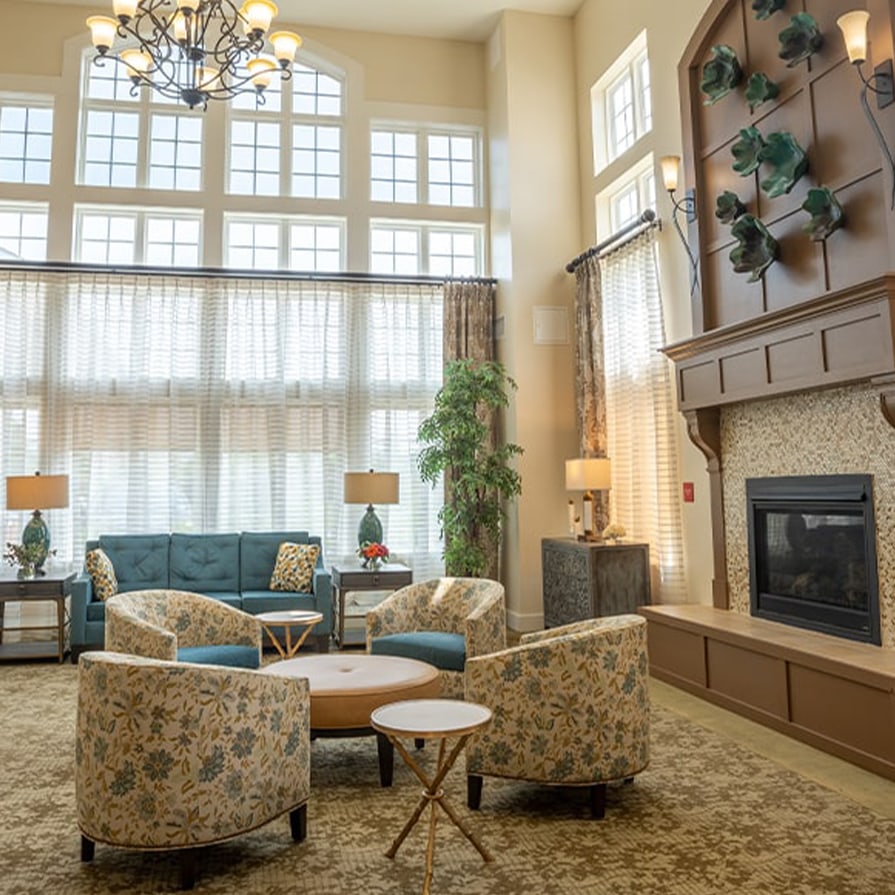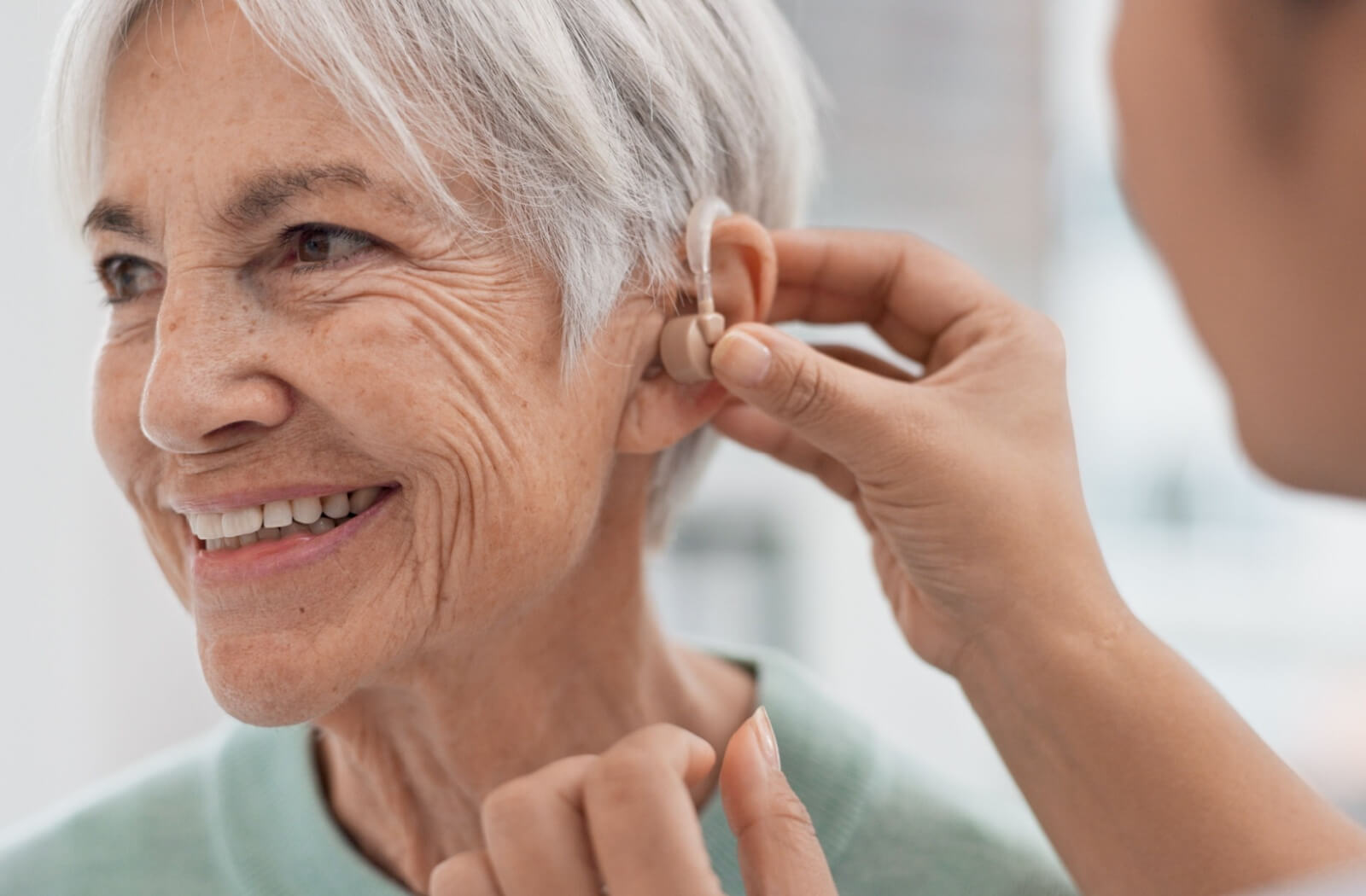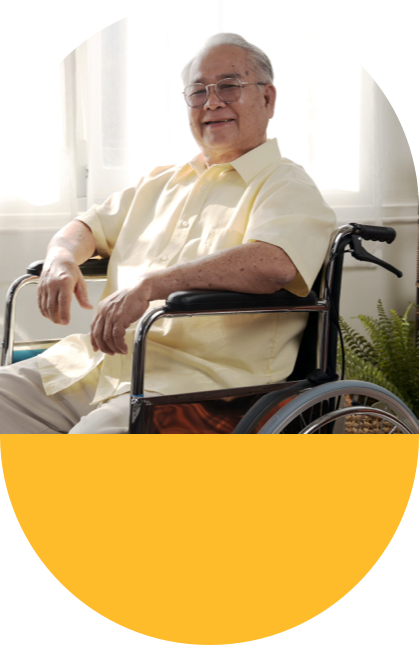As the global population lives longer, the demand for assistive devices that enhance older adults’ quality of life and independence continues to grow. These devices, including hearing aids, mobility scooters, and smart home systems, offer significant benefits such as improved safety, convenience, enhanced mobility, and social engagement.
For older adults, these innovations are more than mere conveniences—they’re lifelines that enable a more enriched and independent lifestyle. Older adult living communities, such as those offered by Juniper, are increasingly integrating these technologies to support residents’ well-being.
Assistive devices like smart home systems and mobility aids are helpful in independent living settings as well, enhancing autonomy and quality of life.
Popular Assistive Devices
Hearing Aids
Hearing loss is a common issue among older adults, leading to social isolation and decreased quality of life. Modern hearing aids are not only more comfortable and effective than their predecessors but also come equipped with features such as Bluetooth connectivity and noise-cancellation. These features allow older adults to engage more fully in conversations and activities, thus enhancing their social engagement and mental health.
Mobility Scooters
Mobility scooters provide a practical solution for those with limited mobility, enabling them to navigate their environment with ease. Whether it’s a trip to the grocery store or a stroll in the neighborhood, these scooters offer independence and freedom of movement, reducing the reliance on caregivers or family members. This autonomy is critical for maintaining a sense of dignity and self-sufficiency.
Smart Home Technologies
The rise of smart home technologies has revolutionized the way older adults interact with their living spaces. Devices such as smart lights, thermostats, and voice-activated assistants can be controlled remotely, offering convenience and safety.
For example, a voice-activated assistant can remind older adults to take their medications or alert them about appointments. These technologies make daily tasks easier and provide peace of mind to older adults and their families.
Benefits of Assistive Devices
Safety
Safety is a paramount concern for older adults, particularly those living alone. Assistive devices like fall detection sensors and emergency alert systems can automatically notify caregivers or emergency services in the event of an accident. This immediate response capability is crucial in preventing minor incidents from becoming life-threatening situations.
Convenience
Assistive devices simplify daily routines, making it easier for older adults to perform tasks independently. This convenience extends to routine activities such as cooking, cleaning, and personal hygiene, allowing older adults to maintain their routines without assistance.
Social Engagement
By breaking down barriers to communication and mobility, assistive devices foster social interaction. Whether through better hearing, increased mobility, or enhanced communication tools, these devices enable older adults to participate more fully in community activities and family gatherings, reducing feelings of isolation.
The Role of Senior Living Communities
Older adult living communities, like Juniper, play a vital role in integrating these technologies into their environments. These communities not only provide access to the latest assistive devices but also offer a supportive network that encourages their use.
By incorporating these technologies into their daily operations, older adult living communities make sure that residents can enjoy a safe, engaging, and independent lifestyle.
Innovative Trends & Future Developments

The field of assistive technology is continually evolving, with innovations that promise even greater enhancements in the quality of life for older adults.
Wearable Technology
Wearable technology, for instance, is gaining traction, offering health monitoring features such as heart rate and activity tracking. These devices can provide real-time health data, allowing for early intervention and personalized care plans.
Virtual Reality
Virtual reality is another emerging trend, offering older adults immersive experiences that can enhance cognitive functioning and provide therapeutic benefits. From virtual travel experiences to cognitive training programs, the potential applications are vast and varied.
Robotics
Advancements in robotics are set to revolutionize the landscape of assistive devices. Robotic companions and caregivers are being developed to offer companionship and assistance with daily tasks, providing an additional layer of support.
The Bright Future of Assistive Technology
Assistive devices are transformative tools that enhance older adults’ independence, safety, and social engagement. As technology advances, these devices will continue to offer new opportunities for older adults to lead fulfilling lives.
By integrating these innovations, independent living communities like Juniper Village at Mount Joy are at the forefront of this positive change, ensuring residents enjoy a vibrant and independent lifestyle. The future of assistive technology holds great promise, with the potential to further enrich the lives of older adults worldwide.
Explore our communities today and see firsthand how our integration of assistive technologies empowers our residents to enjoy a vibrant, independent lifestyle. Take the next step toward a community that embraces the future and nurtures your essential spirit. Visit us now to learn more and schedule a personal tour!







